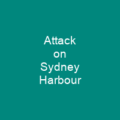Convoy GP55: A Critical Encounter in World War II
Imagine a fleet of ships, like a convoy, setting sail from Sydney to Brisbane. This wasn’t just any journey; it was part of the broader struggle against Japanese submarines during World War II.
The Journey and the Threat
In June 1943, Convoy GP55 embarked on its perilous voyage, comprising ten cargo ships and five corvettes. The sea was not just a path to Brisbane; it was a battlefield where every ship was a potential target.
The Attack: A Turning Point
On June 16, the convoy faced an unexpected adversary—Japanese submarine I-174. This attack wasn’t just a skirmish; it was a turning point in the battle for control of the seas off Australia’s eastern coast.
The Sinking of Portmar
US Army transport Portmar was one of the first to fall victim. It sank within minutes after being hit by a second torpedo, leaving behind only survivors who were later rescued by Deloraine. The loss of such a ship was a stark reminder of the dangers lurking beneath the waves.
The Damage to USS LST-469
USS LST-469 wasn’t as fortunate. It suffered severe damage near its stern, resulting in 26 lives lost. The ship’s crew fought valiantly but couldn’t prevent the inevitable.
The Counterattack and Aftermath
Two corvettes—Warrnambool and Kalgoorlie—counter-attacked I-174 but only managed to inflict minor damage. The submarine, however, was not as easily defeated. It escaped, leaving the Australian naval forces with a sense of unfinished business.
The Search for I-174
Following the attack, the Australian Chief of Naval Staff ordered ‘special measures’ to search for I-174. The RAAF and RAN worked tirelessly but found no further sightings. It was assumed that the submarine had escaped.
The Last Attack on East Coast Australia
I-174’s attack on Convoy GP55 marked the last Japanese submarine operation off the east coast of Australia. The threat to shipping began to decline, and as a result, the RAN ceased running convoys in waters south of Newcastle on December 7, 1943.
Lessons Learned
The failure to sink I-174 led to an inquiry that highlighted communication breakdowns between the RAAF and RAN. The inquiry suggested establishing a new organization to coordinate escorts and their tactics, emphasizing the importance of coordination in naval operations.
Was this just another battle or a turning point in the war? Could better coordination have changed the outcome?

The story of Convoy GP55 is a testament to the challenges faced by naval forces during World War II. It reminds us that even in the face of adversity, coordination and communication are key to success.
You want to know more about Convoy GP55?
This page is based on the article Convoy GP55 published in Wikipedia (retrieved on November 28, 2024) and was automatically summarized using artificial intelligence.







